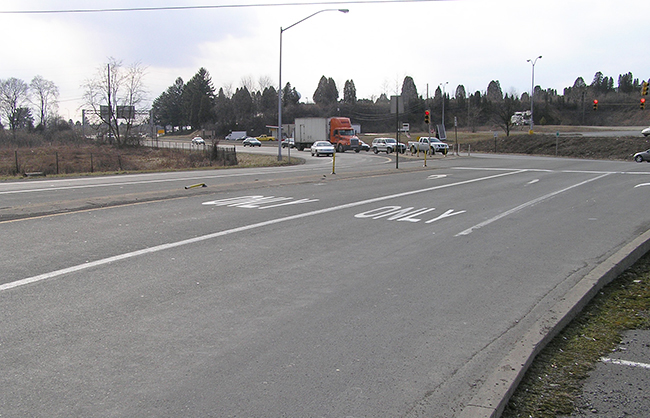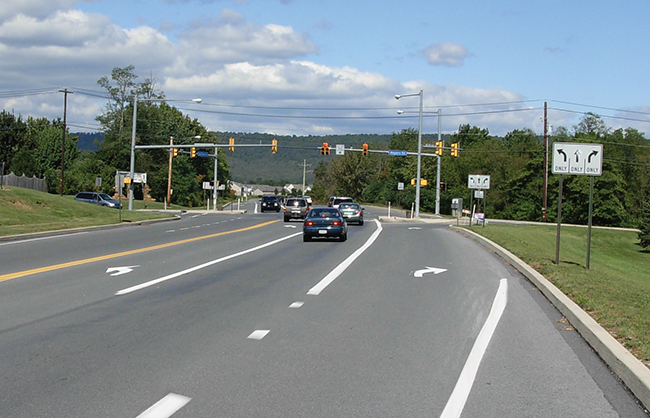Pavement Word, Symbol, and Arrow Markings

Pavement word, symbol, and arrow markings serve the purpose of guiding, warning, or regulating traffic. Word and symbol markings should be limited to no more than three lines of information and shall be white with reflective properties. Additionally, they should be proportionally scaled to fit within the width of the facility upon which they are to be applied. The number of different word and symbol markings used should be minimized to provide effective guidance and avoid misunderstanding. Symbol messages are preferable to word messages.
Additional guidance from the MUTCD regarding the use of the word STOP includes the following:
** Except at the ends of aisles in parking lots, the word STOP shall not be used on the pavement unless accompanied by a stop line and STOP sign. At the ends of aisles in parking lots, the word STOP shall not be used on the pavement unless accompanied by a stop line.
** The word STOP shall not be placed on the pavement in advance of a stop line, unless every vehicle is required to stop at all times.

Word, Symbol, and Arrow Markings are often used at multiple lane approaches to intersections to assist motorists in determining which lane to use. However, this can become more difficult at nighttime, in wet conditions, and when pavement markings become worn. To supplement pavement markings, lane use control signs should be installed on multiple lane approaches. The MUTCD provides guidelines for the installation of these signs.
In addition to MUTCD standards and guidelines; pavement marking letters, numerals, symbols, and arrows shall be installed in accordance with the design details in the Pavement Markings chapter of the "Standard Highway Signs and Markings" book. This book includes standard alphabets, symbols, and arrows for signs and pavement markings.


